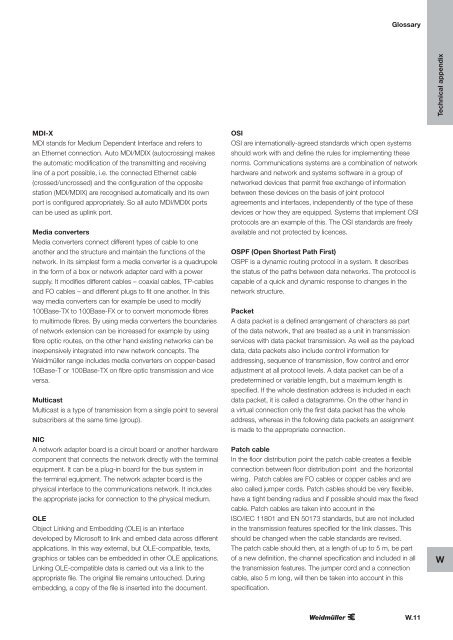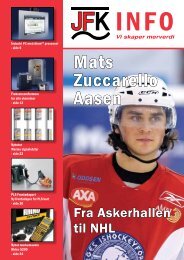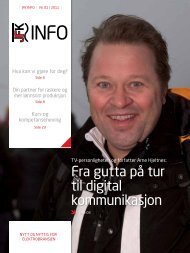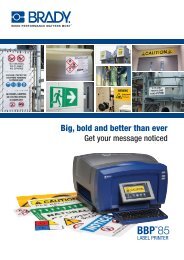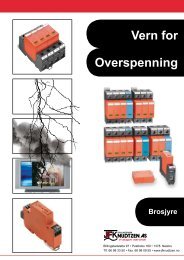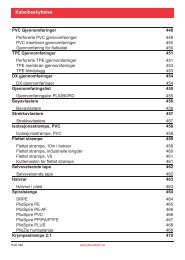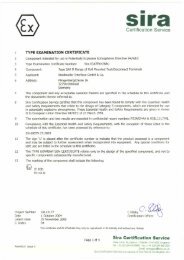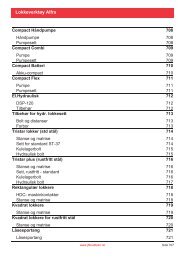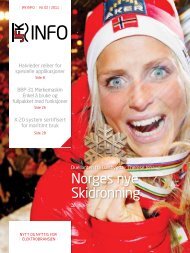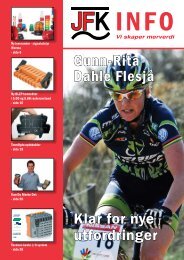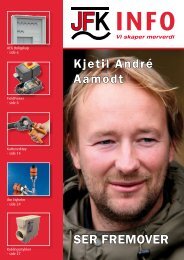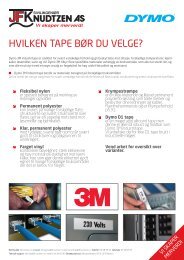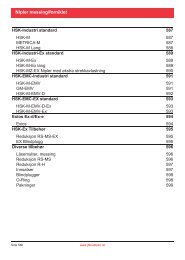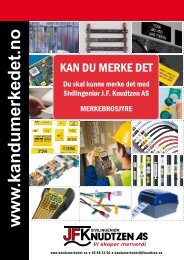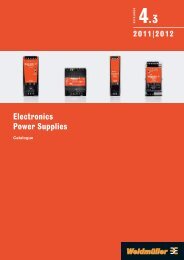Industrial Ethernet
Industrial Ethernet
Industrial Ethernet
You also want an ePaper? Increase the reach of your titles
YUMPU automatically turns print PDFs into web optimized ePapers that Google loves.
GlossaryTechnical appendixMDI-XMDI stands for Medium Dependent Interface and refers toan <strong>Ethernet</strong> connection. Auto MDI/MDIX (autocrossing) makesthe automatic modification of the transmitting and receivingline of a port possible, i.e. the connected <strong>Ethernet</strong> cable(crossed/uncrossed) and the configuration of the oppositestation (MDI/MDIX) are recognised automatically and its ownport is configured appropriately. So all auto MDI/MDIX portscan be used as uplink port.Media convertersMedia converters connect different types of cable to oneanother and the structure and maintain the functions of thenetwork. In its simplest form a media converter is a quadrupolein the form of a box or network adapter card with a powersupply. It modifies different cables – coaxial cables, TP-cablesand FO cables – and different plugs to fit one another. In thisway media converters can for example be used to modify100Base-TX to 100Base-FX or to convert monomode fibresto multimode fibres. By using media converters the boundariesof network extension can be increased for example by usingfibre optic routes, on the other hand existing networks can beinexpensively integrated into new network concepts. TheWeidmüller range includes media converters on copper-based10Base-T or 100Base-TX on fibre optic transmission and viceversa.MulticastMulticast is a type of transmission from a single point to severalsubscribers at the same time (group).NICA network adapter board is a circuit board or another hardwarecomponent that connects the network directly with the terminalequipment. It can be a plug-in board for the bus system inthe terminal equipment. The network adapter board is thephysical interface to the communications network. It includesthe appropriate jacks for connection to the physical medium.OLEObject Linking and Embedding (OLE) is an interfacedeveloped by Microsoft to link and embed data across differentapplications. In this way external, but OLE-compatible, texts,graphics or tables can be embedded in other OLE applications.Linking OLE-compatible data is carried out via a link to theappropriate file. The original file remains untouched. Duringembedding, a copy of the file is inserted into the document.OSIOSI are internationally-agreed standards which open systemsshould work with and define the rules for implementing thesenorms. Communications systems are a combination of networkhardware and network and systems software in a group ofnetworked devices that permit free exchange of informationbetween these devices on the basis of joint protocolagreements and interfaces, independently of the type of thesedevices or how they are equipped. Systems that implement OSIprotocols are an example of this. The OSI standards are freelyavailable and not protected by licences.OSPF (Open Shortest Path First)OSPF is a dynamic routing protocol in a system. It describesthe status of the paths between data networks. The protocol iscapable of a quick and dynamic response to changes in thenetwork structure.PacketA data packet is a defined arrangement of characters as partof the data network, that are treated as a unit in transmissionservices with data packet transmission. As well as the payloaddata, data packets also include control information foraddressing, sequence of transmission, flow control and erroradjustment at all protocol levels. A data packet can be of apredetermined or variable length, but a maximum length isspecified. If the whole destination address is included in eachdata packet, it is called a datagramme. On the other hand ina virtual connection only the first data packet has the wholeaddress, whereas in the following data packets an assignmentis made to the appropriate connection.Patch cableIn the floor distribution point the patch cable creates a flexibleconnection between floor distribution point and the horizontalwiring. Patch cables are FO cables or copper cables and arealso called jumper cords. Patch cables should be very flexible,have a tight bending radius and if possible should max the fixedcable. Patch cables are taken into account in theISO/IEC 11801 and EN 50173 standards, but are not includedin the transmission features specified for the link classes. Thisshould be changed when the cable standards are revised.The patch cable should then, at a length of up to 5 m, be partof a new definition, the channel specification and included in allthe transmission features. The jumper cord and a connectioncable, also 5 m long, will then be taken into account in thisspecification.WW.11


